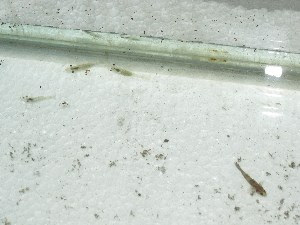 My Dinner at KLCC Sakae Sushi
My Dinner at KLCC Sakae SushiWednesday, December 1, 2010
Thursday, November 11, 2010
Saturday, October 30, 2010
Monday, May 31, 2010
My discus food and soap
Bio Canister
Water heater cost more rm5 just because of the float

Bought this heater from a distributor. It cost more than a normal heater as normal heater will break(glass) it forgotten to switch off during water change. It glass will shatter cos by sudden heat dissipation.
Next time I will buy the cheap one(without float) and i will use styrofoam to acts as a float.
Friday, May 28, 2010
Water Sealant Used for Pond , 2nd type
Water Sealant Used for Pond
'ManMade' Discus- Pigeon BloodDiscus

Unlike most of the "man made strains", the leopard skin discus is a result of selective breeding from two types of wild red spotted green discus originating from different areas and not a genetic mutation. This was done by Hong Kong breeders,over the course of eight years. They were available in the marketplace in 1993. Variations of the leopard skin discus are the size of the spots with some having rings as well as spots and "rings within rings" - those which have blue highlights within the red rings.
'ManMade' Discus- Pigeon BloodDiscus

This "man-made" fish usually has a creamy yellowish - orange base color, highlighted by bright red eyes and trimmed off in black stripes and spots. The tails of pigeon blood discus are almost always black. Some of the varieties of this strain have more or less straitions/ black spotting and/or creamier body coloring. This strain was developed in Thailand. It's been said if you can grow these pigeon blood discus out in bright lights, the black spots, "peppering", will be less.
'ManMade' Discus-Albino Discus

During the middle 1990's, many breeders were crossing snakeskins with several other strains of discus. One of the Malaysian breeders, successfully crossed some leopard skins with snakeskins and introduced these in 1997. Leopard Snakeskins are among the top strains in popularity right now. Variations include sizes of spots, spots on the gill covers, webpatterns on face, and some have a golden base coloring.
'ManMade' Discus-Golden Discus

The original gold discus was the result of a breeding of brown discus by Malaysian breeder. The original fry grew up to become fish with a golden base, white stripes covering the front half of the body, and red eyes. Later refinements developed golden discus with less white markings. Golden discus are often cross bred with pigeon blood discus to eliminate the black 'peppering' on the bodies and the black fins of the pigeon blood - a true golden will have a transparent pectoral and caudal (tail) fins
'ManMade' Discus-Blue Snowwhite Discus

One of the earliest information as to the origin of this strain comes from Malaysia back in 1995. He had purchased several wild brown discus for breeding and had noticed that the fry produced from one pair were transparent. When these fish grew up, they became colorless including their eyes. Contrary to belief, the origins of this strain are from the brown discus and not a ghost strain. Sometime later, the red white variety was created by crossing a snow white with a sold red discus
'ManMade' Discus-San Merah(San Red) Discus

Back in 1992, Singaporean breeder,Ah San, began crossing wild Ica brown discus which were a reddish brown fish with a 5th bar (like the heckel discus). The word "Merah" means "red" in Malay. His goal was to create a strain of solid red discus without stripes or patterns on the body. Two years later, he was able to remove the blue striations on the forehead and about 5 generations later, he was able to have his fish produce fry which grew up lacking the stress bar. Later, he improved the intensity of the red coloration.
'ManMade' Discus-Red Turquoise Discus

This red fish has a turquoise striations running horizontally from head to the base of it's tail. There are also several varieties of this strain; some have yellowish bodies (with turquoise and red stripes) while others have been crossed with red spotted greens to create broken line patterns on the sides. Many of these were orginally developed in Germany
'ManMade' Discus-Blue Turquoise Discus

These beautiful blue fish are usually entirely blue with red patterns/ striations on the body, dorsal and anal fins, and on the gill covers. Many of these were originally developed in the United States from several crossings of wild and tank raised blue and green discus. There are some "high bodied", "solid blue", "red striated", and "high finned" varieties.
Subscribe to:
Comments (Atom)








































